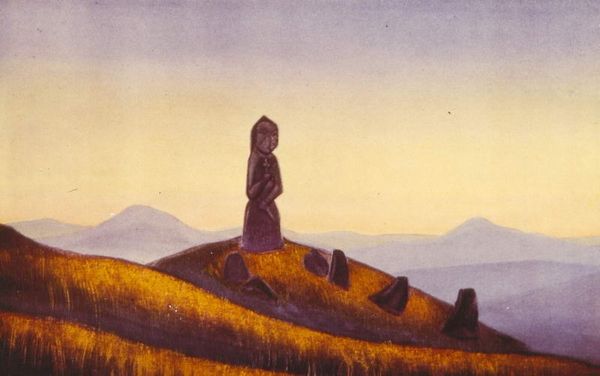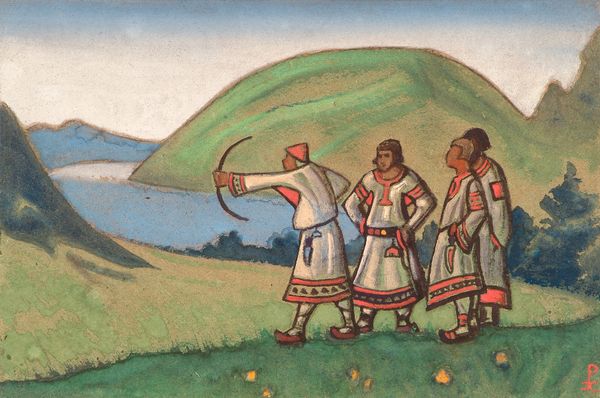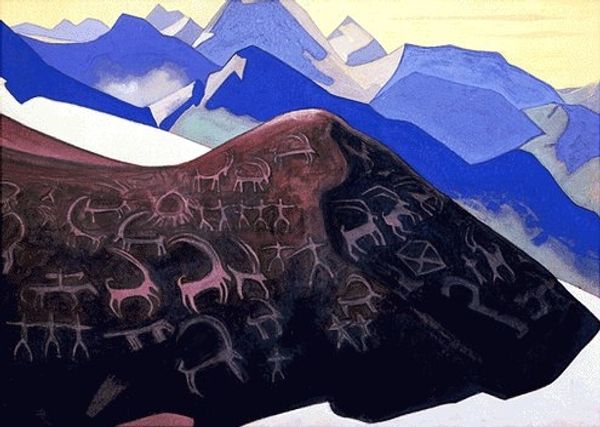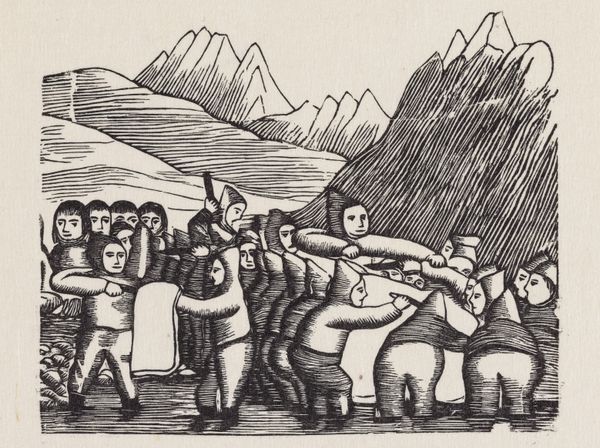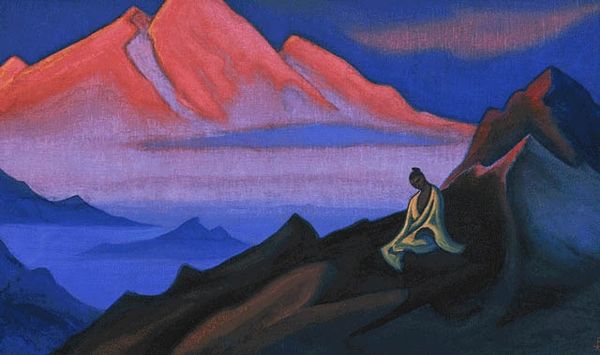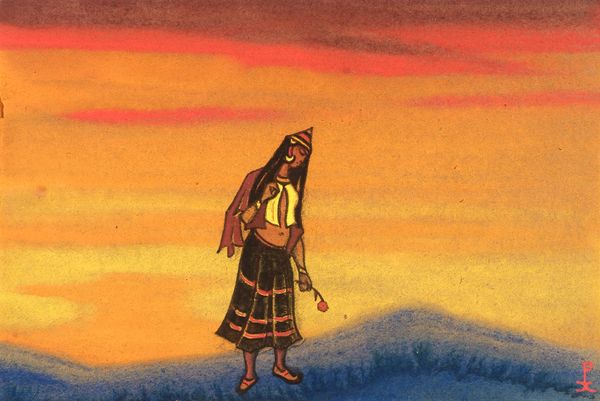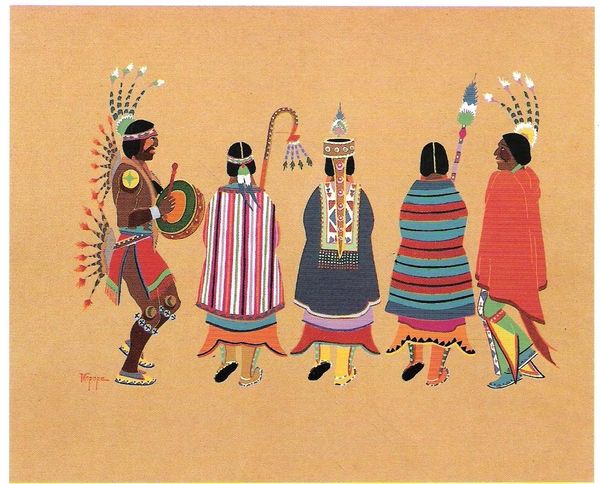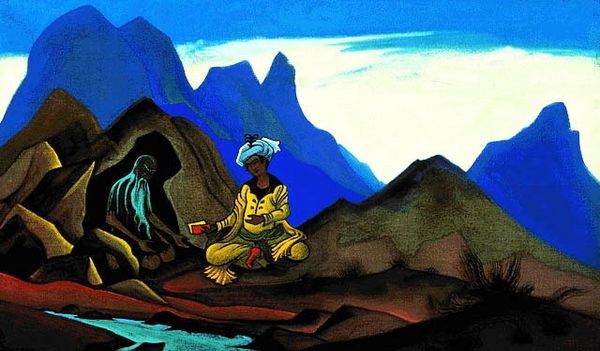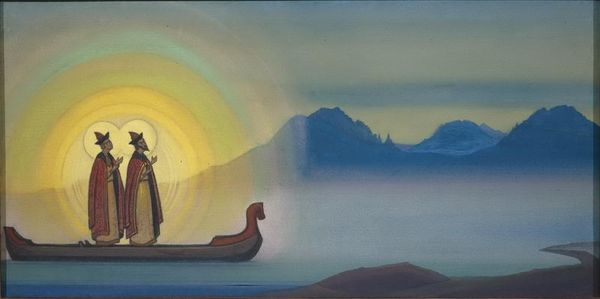
Copyright: Public domain
Nicholas Roerich painted 'The Rite of Spring' depicting an imagined ancient Slavic ritual. Roerich had a deep interest in history, archeology, and folklore, and his image creates meaning through its stylized figures, bold colors, and simplified forms referencing pre-Christian Russia and ancient pagan customs. The painting reflects a broader cultural fascination with folklore at the turn of the century as folklorists started collecting, studying, and recording folk traditions, songs, and stories. Roerich participated in the revival of traditional crafts and the promotion of national identity through art, music, and literature. The image can be understood as a commentary on the search for national identity. Roerich idealizes a distant past, constructing an image of the Russian people rooted in ancient traditions and connected to the land. To better understand the artwork, we might research historical accounts of Slavic rituals, study collections of folk costumes and artifacts, and consider the writings of folklorists and cultural critics of the time. The meaning of art is always contingent on its social and institutional context.
Comments
No comments
Be the first to comment and join the conversation on the ultimate creative platform.



